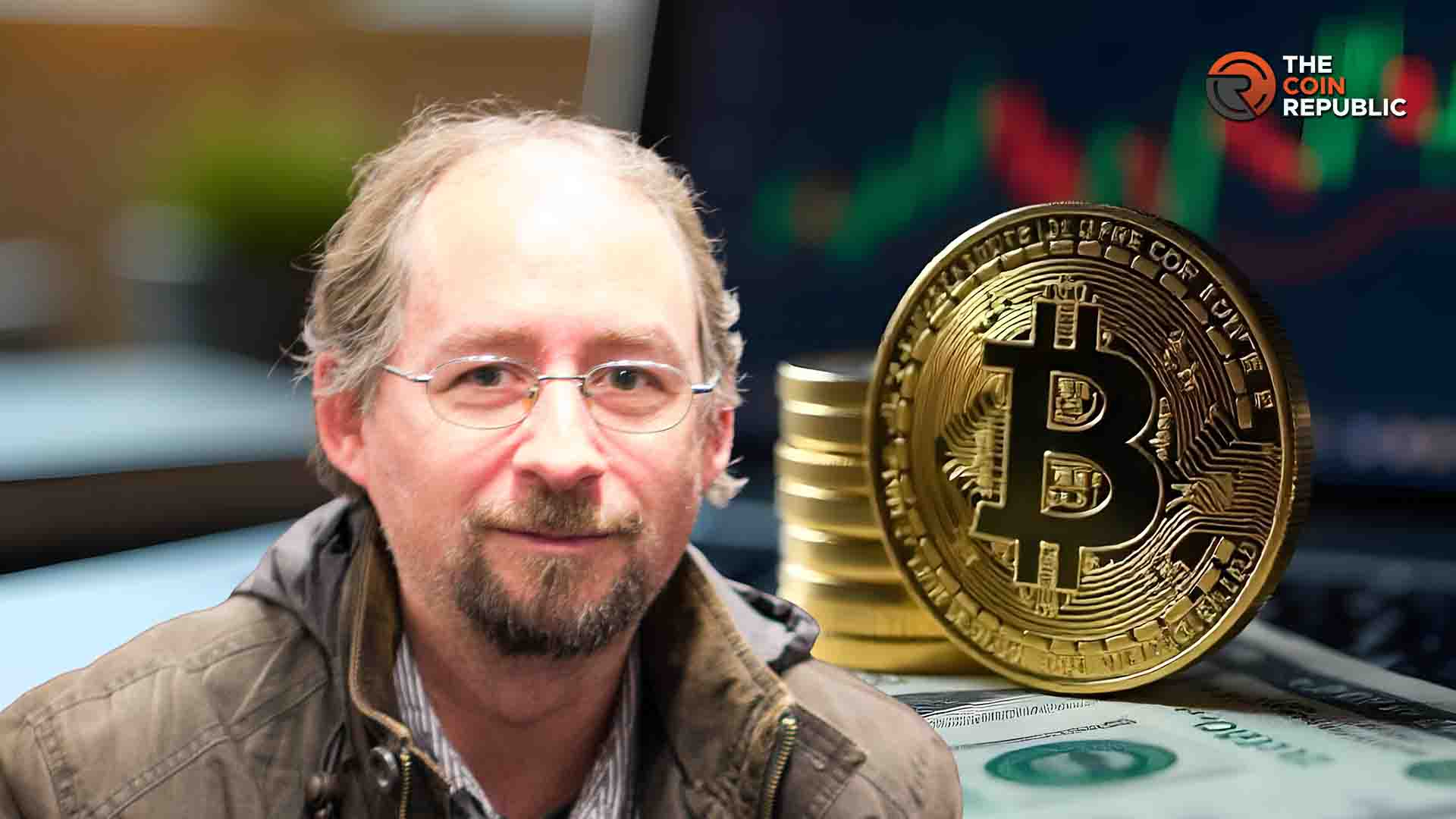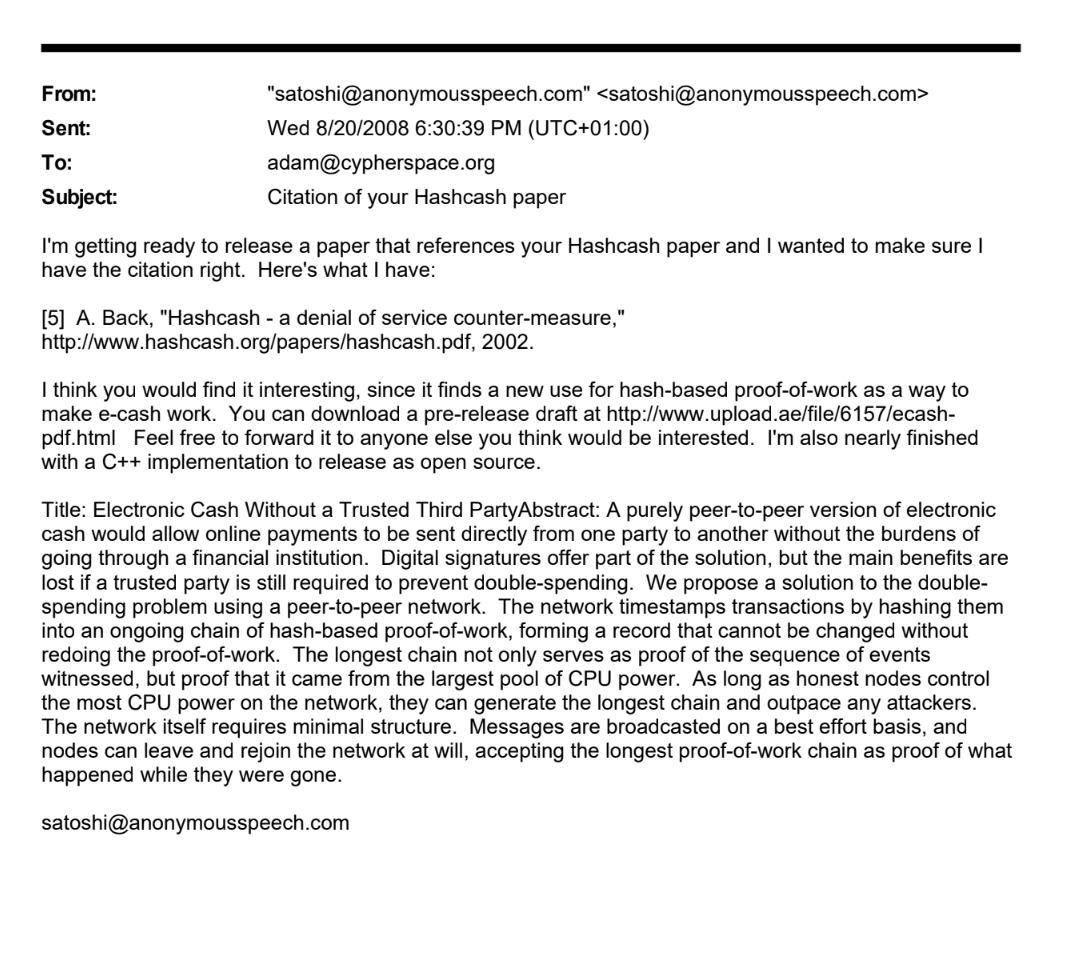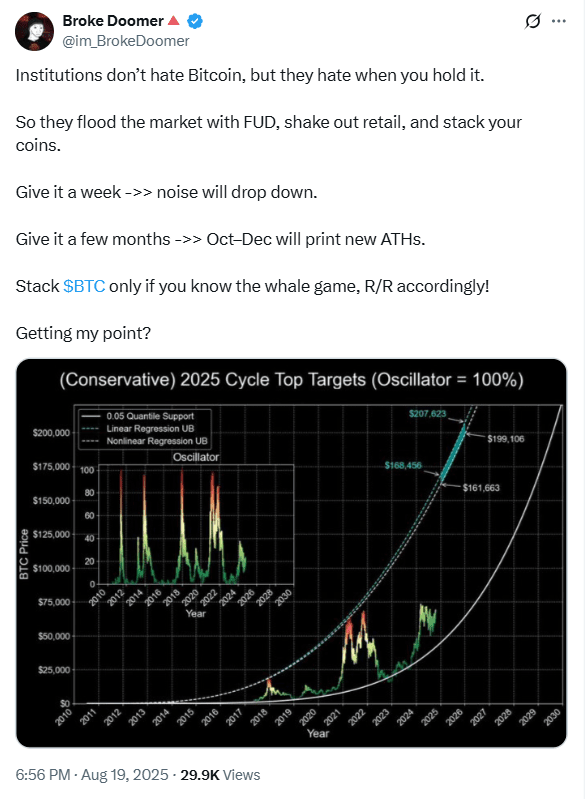according to materials from the site - By Thecoinrepublic.com

A letter sent by Satoshi Nakamoto to Adam Back in August 2008 resurfaced after 17 years.
Notably, the message reflected the early stage of Bitcoin's emergence and came after the number of coins in American spot ETFs containing BTC reached 1.25 million coins.
This milestone was achieved thanks to BlackRock and Fidelity, marking a new phase in institutional adoption of cryptocurrency.
According to available data, on August 20, 2028, the recognized creator of the largest digital asset, Bitcoin, sent an email to Adam Back, the inventor of Hashcash. In the letter, Satoshi referred to Back's 2002 article on HashCash as a key source for his new project.
He attached a draft of his article titled 'Electronic Money without a Trusted Third Party', which later became known as the 'Bitcoin White Paper'.
In this letter, Satoshi Nakamoto explained how Bitcoin would work. He proposed a way to prevent double spending using a proof-of-work (PoW) chain.
Each transaction would be time-stamped and added to the chain. The longest chain, backed by the most computational power, would be considered the valid record.
Satoshi noted that digital signatures alone would not prevent fraud if a trusted third party was required.
Instead, he proposed a peer-to-peer network where nodes could freely leave and rejoin the network.
Honest nodes controlling the majority of computational power would ensure the security of the system.
This message marked an important step in the history of Bitcoin. It showed how existing ideas, such as HashCash, were used to create something new.

The appearance of the letter after 17 years reminded the crypto community how Bitcoin started with a simple exchange between Adam Back and the founder of BTC.
It is worth noting that, although Satoshi's early works resurfaced, Bitcoin looked completely different in 2025. Bitcoin transcended the idea that was prevalent in a small online community and became a valuable financial asset for leading institutional investors.
Market analysts suggested that Bitcoin could reach new all-time highs between October and December 2025, based on the trend of its adoption.
Some traders pointed to cyclical charts predicting possible peaks in the range of $161,663 to $207,623.
Observers noted that large investors, often referred to as 'whales', played an important role in short-term fluctuations by buying during periods of low sentiment and selling when demand increased.

Comments on social media claimed that institutions were not against Bitcoin, but instead were trying to accumulate coins, pushing small holders out due to fear and uncertainty.
Some market participants believe that this dynamic represents a larger shift in the digital asset ecosystem.
Bitcoin stopped being just an experiment with decentralized currency, but became associated with the movements of large funds and corporate players.
The actions of these groups often shaped the market more than the enthusiasm of retail investors.
Moreover, institutional adoption became more evident with the growing popularity of American Bitcoin exchange-traded funds (ETFs).
On August 17, the total assets of these ETFs reached a record 1.25 million BTC.
This was the highest level recorded since their launch, and it was perceived as a strong signal of demand from large investors.
The iShares Bitcoin Trust of BlackRock led the group, owning 748,968 BTC, or 59.9% of all Bitcoin ETFs.
Fidelity's FBTC followed with 199,798 BTC. Together, these two companies controlled more than three-quarters of the bitcoins held in ETFs.
Grayscale's GBTC, once the dominant holder with over 620,000 BTC, fell to 180,576 BTC.
This change marked the end of an era when one fund led the market, and competition between traditional asset managers took its place.
The rise in popularity of ETFs demonstrated how Bitcoin entered the realm of traditional finance. For many investors, ETFs provided access to assets without the need to own coins directly.
For institutions, they offered a regulated structure for accumulating and storing large amounts.
With us (in this group!), usually stay those (subscribers!) who, in search of fresh and relevant news, do not want to browse dozens of different websites and news outlets, but can afford to read all the most interesting news in one news feed!!! 😉
Enjoy your viewing!!! 😊


